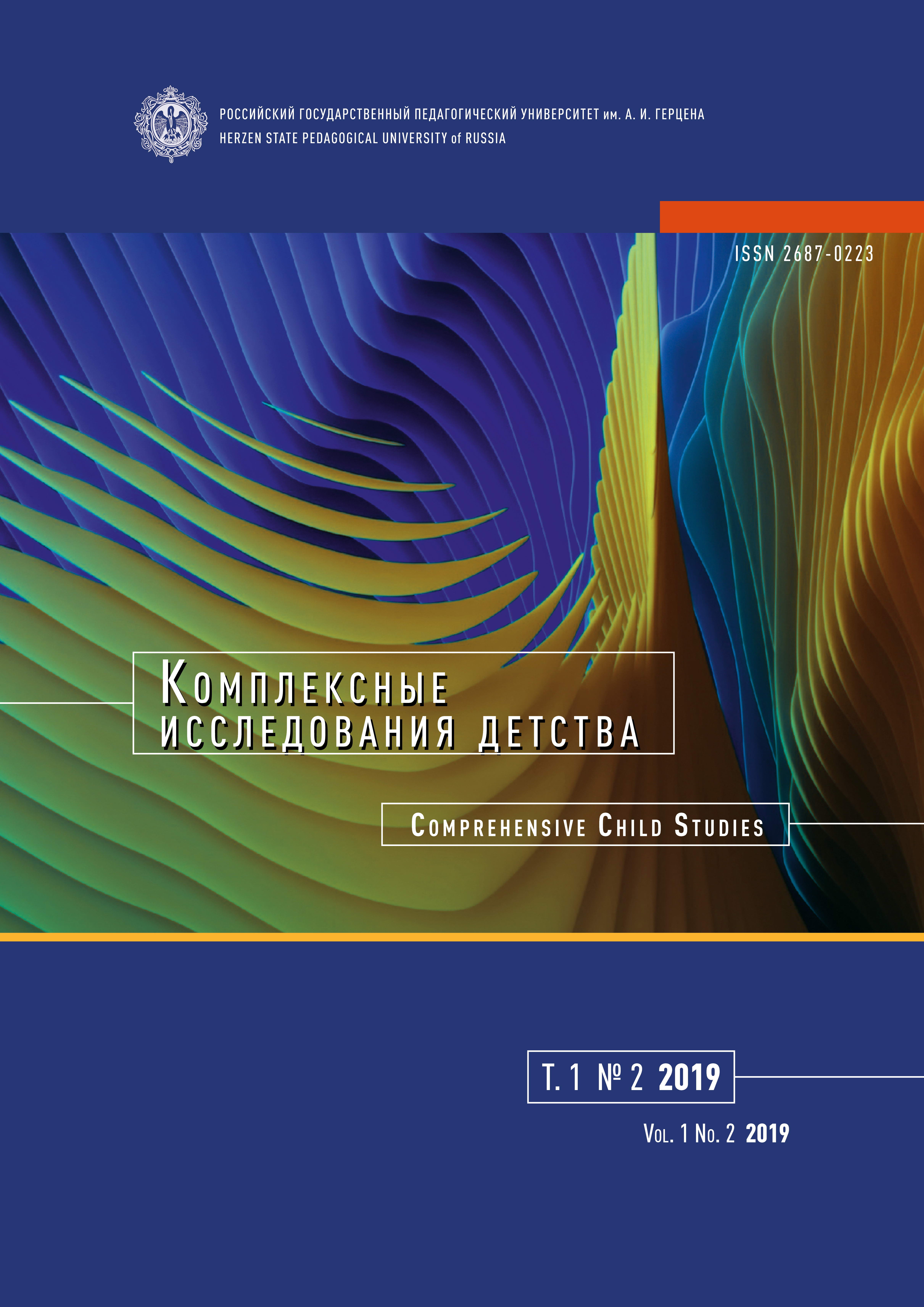Potential of theater for social inclusion and destigmatization of people with intellectual disability: A case study of the En Dynamei theater group
DOI:
https://doi.org/10.33910/2687-0223-2019-1-2-132-142Keywords:
mixed theater group, inclusive theater, mental retardation, disability, synergy, stigma, social integration, community mobilizationAbstract
This study is inspired by the author’s many years of participation in a mixed theatre group En Dynamei, which includes actors with and without disorders of intellectual development. This qualitative research aims to explore and analyze the possibilities for equal partnership between artists with different faculties in theatrical synergy, to explore whether such a mixed creative group can become a model for social inclusion and to what extent theatrical performances with “strange” themes and “extraordinary” actors change public attitudes and stereotypes as a prerequisite for de-stigmatization and social integration of people with limited intellectual capabilities.
This case study is based on the method of inclusive observation as a participant observer. Data collection methods include four years and eight months of participant observation period including rehearsals, theatre stage work, participation in festivals in Greece and other countries, everyday discussions and interaction, in-depth interviews with the artistic director and the theater director, semi-structured interviews with parents of disabled members, interviews with all the 26 actors and with audience, as well as audiovisual material from their performances and media interviews.
Research findings show that equal participation of actors with different abilities in theatrical activities encourages social integration and emancipation of participants with limited mental capabilities and confirms that such creative synergy has a significant impact on the social skills of people with mental retardation. This study also emphasizes that the creative and inclusive potential of theater helps overcome stigma and contributes to the social integration of people with intellectual disability.
References
Americans with Disabilities Act of 1990. [Online]. Available at: https://www.eeoc.gov/eeoc/history/35th/thelaw/ ada.html (accessed 23.05.2019). (In English)
Ashwell, M., Gouge, K. (eds.). (2003) Drama in schools. 2nd ed. [Online]. Available at: https://webarchive. nationalarchives.gov.uk/20160204124059/http://www.artscouncil.org.uk/advice-and-guidance/browse-advice-and-guidance/drama-in-schools-second-edition (accessed 23.05.2019).
Barnes, C. (2003) Effecting change: Disability, culture and art. Paper presented at the Finding the spotlight conference, Liverpool Institute for the Performing Arts (28th–31st May 2003). [Online]. Available at: https://pdfs.semanticscholar. org/3083/66015761b54b390ea7fc7b714318373ef596.pdf (accessed 27.05.2019). (In English)
European Disability Strategy 2010–2020: A Renewed Commitment to a Barrier-Free Europe. (2010) [Online]. Available at: https://eur-lex.europa.eu/LexUriServ/LexUriServ.do?uri=COM%3A2010%3A0636%3AFIN%3 Aen%3APDF (accessed 25.11.2019). (In English)
Freeman, G. D., Sullivan, K., Fulton, C. R. (2003) Effects of creative drama on self-concept, social skills, and problem behavior. The Journal of Educational Research, vol. 96, no. 3, pp. 131–138. DOI: 10.1080/00220670309598801 (In English).
Goffman, E. (1963) Stigma: Notes on the management of spoiled identity. London: Penguin Books, 180 p. (In English)
Jindal-Snape, D., Vettraino, E. (2007) Drama techniques for the enhancement of social-emotional development in people with special needs: Review of research. International Journal of Special Education, vol. 22, no. 1, pp. 107–117. (In English)
Karadzhova, K., Shchereva, D. (2009) Alternativni sredstva za vazdejstvie pri detsa s umstvena izostanalost [Alternative means for impact to children with intellectual disabilities]. Sofia: Sv. Kliment Ohridski Publ., 164 p. (In Bulgarian)
Kempe, A., Tissot, C. (2012) The use of drama to teach social skills in a special school setting for students with autism. Support for Learning, vol. 27, no. 3, pp. 97–102. DOI: 10.1111/j.1467-9604.2012.01526.x (In English)
Kuppers, P. (2011) Disability culture and community performance: Find a strange and twisted shape. London: Palgrave Macmillan, 282 p. DOI: 10.1057/9780230316584 (In English)
Lenakakis, A., Koltsida, M. (2017) Disabled and non-disabled actors working in partnership for a theatrical performance: A research on theatrical partnerships as enablers of social and behavioural skills for persons with disabilities. Research in Drama Education: The Journal of Applied Theatre and Performance, vol. 22, no. 2, pp. 251–269. DOI: 10.1080/13569783.2017.1286975 (In English)
Oliver, M. (1990) The politics of disablement. London: Palgrave Macmillan, 168 p. DOI: 10.1007/978-1-349-20895-1 (In English)
Peter, M. (2000a) Drama: Communicating with people with learning disabilities. Nursing and Residential Care, vol. 2, no. 2, pp. 78–82. (In English)
Peter, M. (2000b) Developing drama with children with autism. Good Autism Practice, vol. 1, no. 1, pp. 9–20. (In English)
Peter, M. (2003) Drama, narrative and early learning. British Journal of Special Education, vol. 30, no. 1, pp. 21–27. DOI: 10.1111/1467-8527.00277 (In English)
Schnapp, L., Olsen, C. (2003) Teaching self-advocating strategies through drama. Intervention in School and Clinic, vol. 38, no. 4, pp. 211–219. DOI: 10.1177/105345120303800403 (In English)
Schonmann, S. (ed.). (2011) Key concepts in theatre/drama education. Rotterdam; Boston; Taipei: Sense Publishers, 378 p. DOI: 10.1007/978-94-6091-332-7 (In English)
Slade, P. (1998) The importance of dramatic play in education and therapy. Child Psychology and Psychiatry Review, vol. 3, no. 3, pp. 110–112. DOI: 10.1017/S1360641798001592 (In English)
World report on disability. (2011) World Health Organization. [Online]. Available at: https://www.who.int/disabilities/ world_report/2011/en/ (accessed 28.05.2019). (In English)
Downloads
Published
Issue
Section
License
The work is provided under the terms of the Public Offer and of Creative Commons public license Creative Commons Attribution 4.0 International (CC BY 4.0).
This license permits an unlimited number of users to copy and redistribute the material in any medium or format, and to remix, transform, and build upon the material for any purpose, including commercial use.
This license retains copyright for the authors but allows others to freely distribute, use, and adapt the work, on the mandatory condition that appropriate credit is given. Users must provide a correct link to the original publication in our journal, cite the authors' names, and indicate if any changes were made.
Copyright remains with the authors. The CC BY 4.0 license does not transfer rights to third parties but rather grants users prior permission for use, provided the attribution condition is met. Any use of the work will be governed by the terms of this license.







